Of course the posters for the 2024 Paris Olympic Games are high art
The French bring a certain ‘je ne sais quoi’ to poster design for the 2024 Olympic Games.

Olympic host cities have been creating and disseminating posters since the Stockholm Games of 1912. Earlier this summer, Paris joined the club, unveiling 14 posters by 7 artists leading up to the 2024 Olympic Games. The winners, selected by a jury that included officials, artists, and athletes, are a varied group of artists—even a couple of Americans—who employ an equally wide-ranging series of subjects, styles, and media.
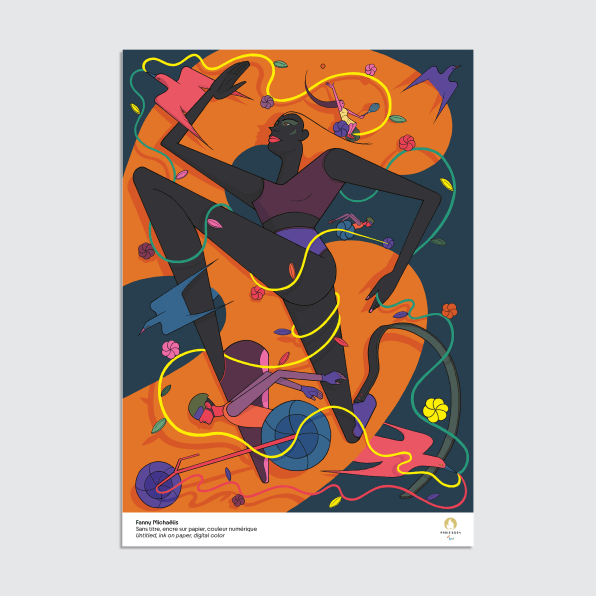
French illustrator and comic artist Fanny Michaëlis, for instance, has created brightly swirling, free-flowing posters embedded with Olympic colors, competitors, and symbols. Pierre Seinturier, whose work blurs the line between painting and drawing, has sketched cinematic pencil drawings that capture specific moods and moments in time. Gilles Elie’s acrylic-on-canvas works reshuffle the colors and symbols of the Olympics into stunning abstraction. And photographer duo Elsa & Johanna’s quirky images turn colored paper plates and cupcakes into Olympic icons.
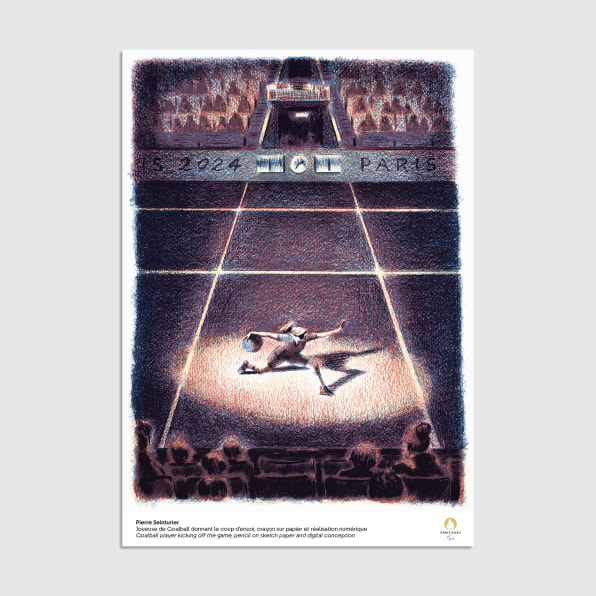
The goal of compiling such an eclectic mix of work, notes Dominique Hervieu, head of culture for Paris 2024, is to display the multiplicity of artists, aesthetics, and approaches in France, not focus on any national traits. “French art doesn’t exist,” says Hervieu. “French art is diversity. Diversity of aesthetics, style, point of view.” Each artist was asked to create a poster for both the Olympic and Paralympic Games—displayed together as diptychs, putting the two events on equal footing, art-wise.
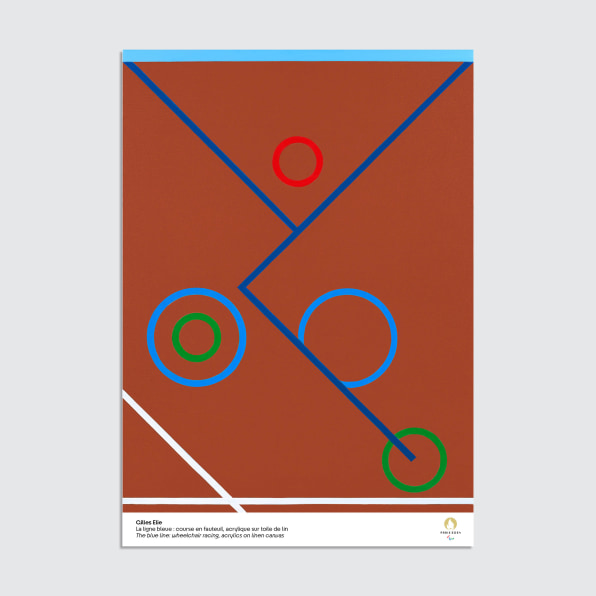
Hervieu and her colleagues also sought work that could be comprehensible to the general public, not just art lovers—focusing on the joy and hope that the Olympics represents. “We really said to the artists that this is for everybody. It’s not for a museum,” says Hervieu. Reinforcing this sentiment, the posters were unveiled not inside an institution, but on walls along the banks of the Seine. Starting in September, the posters will tour dozens of French cities.
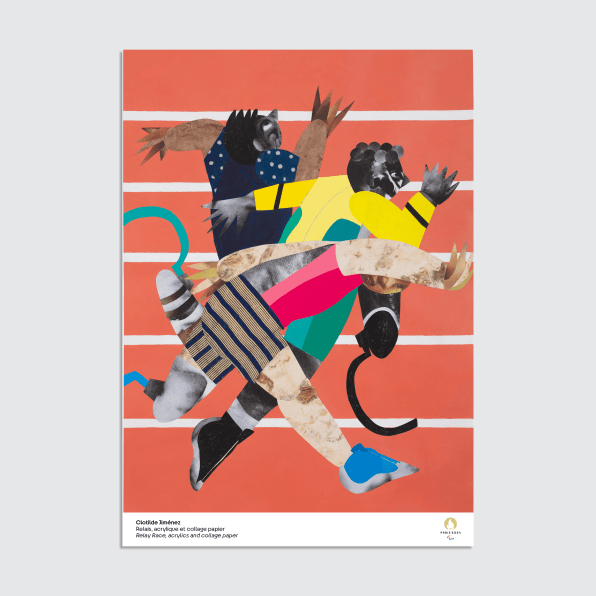
The team discouraged the artists from taking esoteric approaches or making political statements, but they still gave them license to push the boundaries of design and concept. You won’t see a bunch of images of the Eiffel Tower here. Clotilde Jiménez, an American-born collage artist now living in Mexico City, sees his posters as visual storytelling, introducing sometimes surprising layers of material, subject, and meaning to build a narrative based on (to name a few themes), collective endurance, transformation, and, more than anything, coming together. “I believe the message behind the Games is that of unison, instead of division,” he says. (As an American he initially thought there had been a mistake when he received an email inviting him to join the poster competition.)
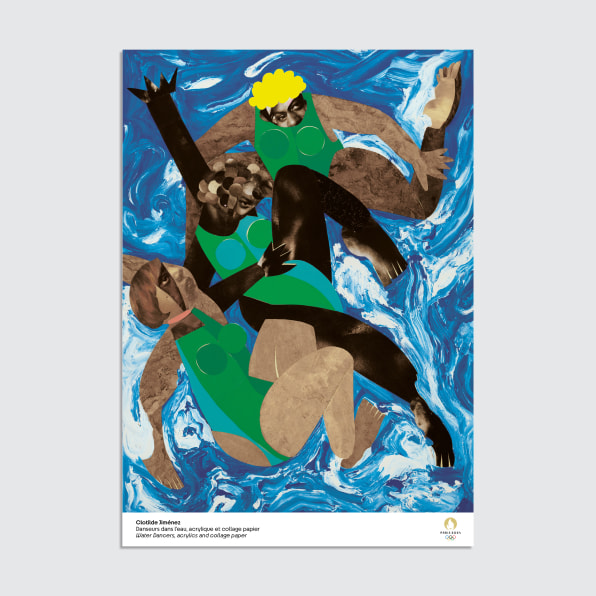
Culture has long been integral to the Olympic program, and the posters are part of Paris 2024’s “Cultural Olympiad,” a yearlong celebration of art and sport leading up to the games that will include more than 500 events across the country. Despite not being able to employ the kind of budget of, say, London 2016, Hervieu explains that institutions across the country—including the Musée d’Orsay, the Centre Pompidou, Chateau of Versailles, and even the Cadre Noir, a famed military horse riding corps—have jumped at the chance to represent France and explore the links between sport and art.
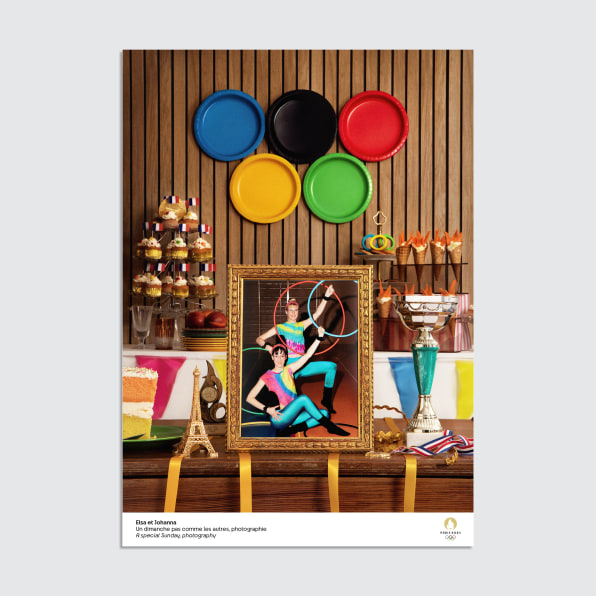
Some offerings are quite creative: Acrobats and parcour athletes from the Compagnie L’Oubliée will explore the bounds of the Palais Royale. Singers from the Compagnie Harmonieuse Disposition will perform an opera with aquatic athletes at the swimming pool, Piscine de la Butte-aux-Cailles. Dancers from the Paris Opera Ballet will join with street dancers in an event that’s still being planned, says Hervieu.
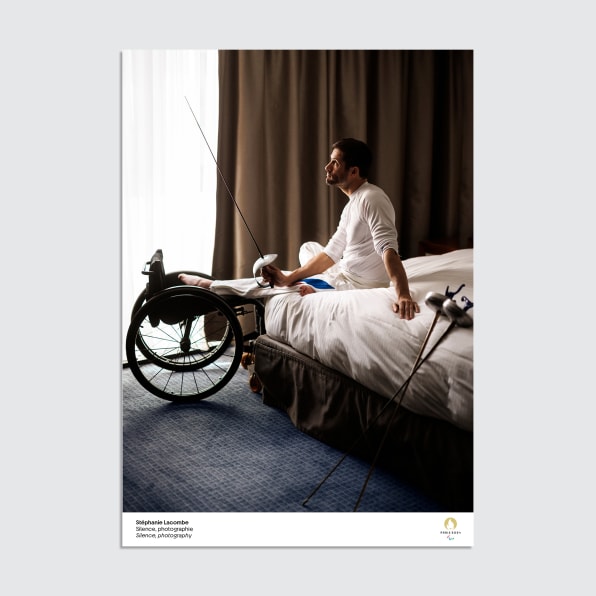
Hervieu reiterates that the core pillars of the games, since their ancient inception, have indeed been sport, education, and culture. It’s something that sets them apart from, say, the World Cup or the Super Bowl. And something that sets France apart from almost anywhere. “We are a nation of art,” says Hervieu. “We will show it.”
Sam Lubell is Editor-at-Large for Metropolis Magazine and the author of more than ten books on architecture and design.


No comments:
Post a Comment